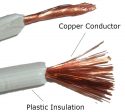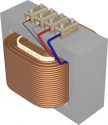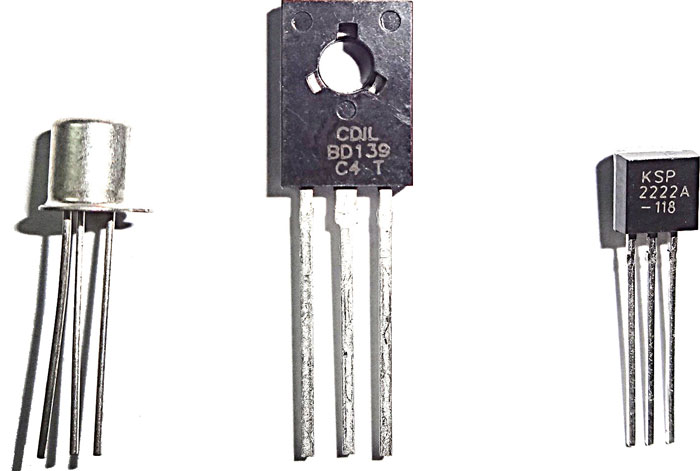 A transistor is a semiconductor device. Its invention led to the rapid rise in digital electronics. They process the signals very fast and are used in the amplification of signals and switching (On and OFF). Transistors are used in computers, game processors, mobile phones, tablets, television, microwave oven, and almost all electronics. From the internet to common household gadgets, everything contains transistors.
A transistor is a semiconductor device. Its invention led to the rapid rise in digital electronics. They process the signals very fast and are used in the amplification of signals and switching (On and OFF). Transistors are used in computers, game processors, mobile phones, tablets, television, microwave oven, and almost all electronics. From the internet to common household gadgets, everything contains transistors.
What is a Transistor?
A transistor is a 3-pin tiny electronic device. It can be used to make electrical signals stronger, therefore called an amplifier. It is also used as a switch to turn on and off the electrical signal.
Due to its fast speed of turning signals on and off, it is used in digital electronics. Because digital electronics works on 0 and 1; where 0 means off, and 1 means on. A transistor is a fundamental building block in digital electronics.
There is a family of technology based on the transistor with its different types like BJT, FET, MOSFET. Other than this, there is a wide variety of models in each family of transistors. These transistors are selected based on their usage and purpose.
How Transistor Works?
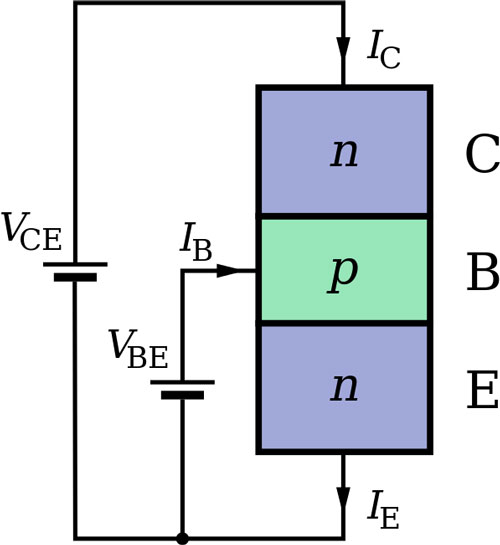 A common transistor consists of three blocks or layers of semiconductors (NPN or PNP) and has 3 pins. The pins of a common transistor are Base (connected to middle layer), Collector (the upper layer), and Emitter (the lower layer).
A common transistor consists of three blocks or layers of semiconductors (NPN or PNP) and has 3 pins. The pins of a common transistor are Base (connected to middle layer), Collector (the upper layer), and Emitter (the lower layer).
We will take NPN transistor to understand the brief concept behind the working of a transistor.
- When current is applied on the Base and Emitter pin of a transistor, the resistance between the collector and emitter pin is reduced which results in the flow of current from collector to emitter.
- The collector to emitter current is several times higher than the current of the base to emitter pin. This way the transistor amplifies the signal. The weak signal is usually given between the base and emitter pin so that a strong signal can be obtained between the collector and emitter pin.
- If there is no current from the base pin to the emitter pin, the current from collector to emitter will seize to flow.
For a detailed understanding of transistor’s working goto: https://www.explainthatstuff.com/howtransistorswork.html
Applications of Transistor
It is mostly used to amplify or process the electrical signal. Some of the most common applications of a transistor are:
- Computer Processor – There are billions of transistors in a processor chip at the nanoscale. With such a large number of transistors, a processor is capable of processing our computing needs such as playing games, web surfing, and usage of the software.
- Radio Transmission – Transistor ICs in communication systems work to increase or decrease the strength of the signal to transfer or receive at long distances. These ICs also convert signal frequency, which means repetition of signal per second. By switching between on and off, they change the signal frequency. Fast switching creates higher frequency signals.
- Games – Transistors or their Ics (such as GPU) in games help process the images. The High Definition (HD) images in megapixels require millions of transistors to process them, therefore, complex ICs are used.
- Air Conditioner – Transistors in an AC help sensors to compare the room temperature with the value set by the user. A transistor also works as the comparator, so when it repeatedly sends and receives signals from temperature sensors, it compares difference. When the desired temperature is met, ICs send the signal to the compressor to maintain it.
History of Transistor Development
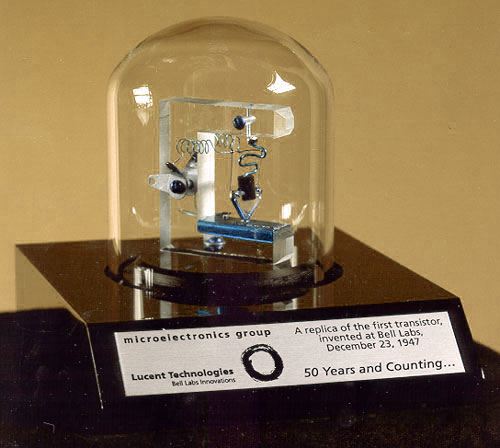
Transistor was invented by a team of three scientists at the Bell Laboratory in the USA in 1947. These scientists were William Shockley, John Bardeen, and Walter Brattain. After 10 years, Jack Kilby, a Texas Instruments fellow worked on transistors and progressed by building an integrated circuit (IC) in 1959. Furthermore, the same was done by Noyce at Fairchild Semiconductor, USA.
During the 1950s and 1960s, early computers and games were developed. With the arrival of more complex ICs, Apple and Microsoft produced their first computers in the 1970s. Based on millions of transistors in a single processor chip, Sony introduced the Playstation game in 1994, and Nokia introduced the mobile phone. In short, the transistor became a building block of digital technology.


